Text
Simple Concepts of Fat Loss No One Gets

Embarking on a fat loss journey can feel like navigating a maze of conflicting information. It’s time to debunk some myths and shed light on lesser-known but highly effective concepts that can transform your fat loss efforts. Forget the overrated cardio and carb-cutting mantras — in this article, we’ll explore the underrated, science-backed strategies that can accelerate your weight loss journey and bring you closer to your fitness goals.
The Overrated: Debunking Common Fat Loss Myths
Doing Cardio: While cardio has its benefits, it’s not the holy grail of fat loss. Many people believe that hours on the treadmill will magically shed pounds, but excessive cardio can lead to muscle loss and hinder your progress.
Zero Carb Consumption: Carbs have been demonized in the weight loss community, leading to misconceptions about eliminating them entirely. In reality, carbs are essential for energy and performance during workouts, making them an important part of a balanced diet.
The Underrated: Unveiling the True Power of Fat Loss
Lifting More Weight and Protein Intake: Strength training and protein consumption are two unsung heroes of fat loss. Lifting weights builds muscle, which boosts metabolism and helps burn more calories even at rest. Additionally, a high-protein diet promotes satiety and preserves lean muscle mass during weight loss.
More BMR Instead of Cardio: Basal Metabolic Rate (BMR) is the number of calories your body needs to maintain basic functions at rest. By focusing on increasing your BMR through muscle-building exercises and dietary choices, you’ll create a more efficient fat-burning machine.
The Science Behind Fat Loss: Busting the Myths
Muscle Matters: Building muscle through resistance training elevates your resting metabolic rate, meaning you burn more calories throughout the day, even when you’re not working out.
The Protein Factor: Protein is the king of nutrients for fat loss. It boosts metabolism, reduces appetite, and aids in muscle preservation during calorie deficits.
The Cardio Balance: While cardio has cardiovascular benefits, overdoing it can stress the body and lead to overeating. Striking a balance between cardio and strength training is key to sustainable fat loss.
Incorporating the Underrated Concepts:
Now that you know the secrets to effective fat loss, here’s how to apply them to your fitness routine:
Embrace Strength Training: Include compound movements like squats, deadlifts, and bench presses in your workouts. Aim for at least 2–3 strength training sessions per week.
Prioritize Protein: Opt for lean protein sources like chicken, fish, tofu, and legumes in your meals. Aim for 1.2–1.6 grams of protein per kilogram of body weight daily.
Increase Your BMR: Focus on building lean muscle mass to elevate your BMR. The more muscle you have, the more calories your body burns, even at rest.
Find a Balanced Approach: Combine strength training, cardiovascular exercises, and a well-rounded diet to create a sustainable fat loss plan that works for you.
Conclusion:
It’s time to break free from conventional fat loss myths and embrace the power of underrated concepts. By incorporating strength training, prioritizing protein intake, and focusing on increasing your BMR, you can unleash the true potential of your fat loss journey. Remember, it’s not just about losing weight — it’s about building a healthier, stronger, and more vibrant version of yourself. So, go ahead, put these concepts to the test, and watch your fat loss goals become a reality!
0 notes
Text
In the dynamic landscape of Singapore, TSquared Lab stands out as a sanctuary for those aiming to redefine their fitness journey. Whether the goal is to lose fat or gain muscle, the journey is deeply personal and requires a strategy that respects your unique body, lifestyle, and aspirations.
Key Takeaways from the Guide:
Customised Training: Learn why a one-size-fits-all approach falls short and how personalised training can be the game-changer in your fitness journey.
Fat Loss Strategies: Dive into effective methods that combine strength training, cardio, and nutrition to sculpt a leaner physique without sacrificing muscle mass.
Muscle Gain Essentials: Explore the critical components of building muscle, from resistance training to the pivotal role of nutrition and recovery.
Balanced Approach: Understand the importance of maintaining a balanced training regimen that supports both fat loss and muscle gain for sustainable results.
Nutritional Guidance: Get actionable nutrition tips tailored to fuel your body for success, whether you’re cutting calories or aiming to bulk up.
Community Support: Discover the power of a supportive fitness community and personalised coaching in keeping you motivated and on track.
This comprehensive guide is not just about reaching your fitness goals; it’s about embracing a lifestyle that brings out the best in you. With TSquared Lab, you gain more than just a personal trainer; you gain a partner dedicated to helping you navigate the complexities of fitness and nutrition, ensuring you’re not just fit but truly thriving.
👉 Dive deeper and transform your approach to fitness: Training For Fat Loss Vs. Muscle Gain – TSquared Blog
Join us at TSquared Lab and redefine what it means to be fit. Your journey to a healthier, stronger you starts here.
0 notes
Text
Reps in Reserve (RIR): Unlocking Your Training Potential
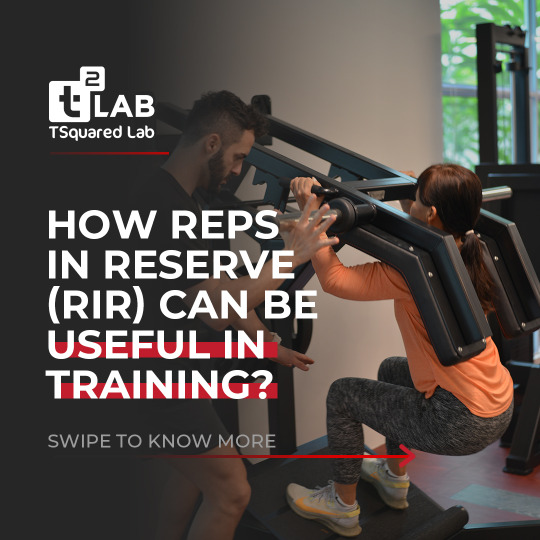
Did you know that the secret to maximizing your strength training lies in something called Reps in Reserve (RIR)? It’s a nifty concept that allows you to take control of your workouts, fine-tuning your exercise intensity and achieving better results. Imagine being able to adjust your training on the fly based on how you feel during each session – that’s the magic of RIR. In this article, we’ll explore how RIR can revolutionize your training and help you reach new heights in your fitness journey.
What is Reps in Reserve (RIR)?
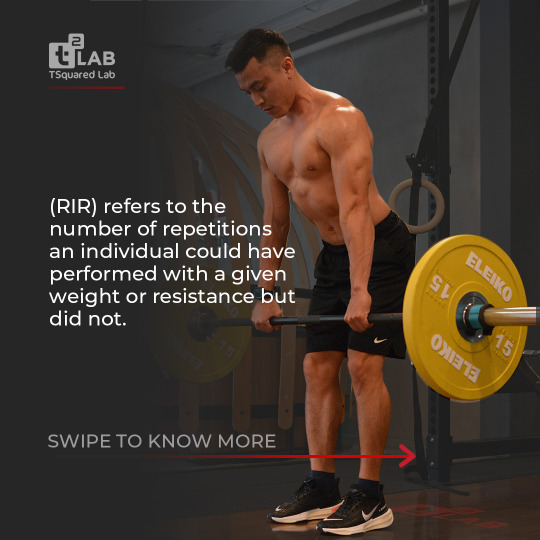

Why is RIR So Useful?

Auto-Regulation: Listen to Your Body
Fitness is a dynamic journey, and not every day is the same. RIR allows you to auto-regulate your workouts, adjusting your intensity based on how you feel. Feeling tired? No problem – increase your RIR to manage your workload while still pushing yourself.
Progression: Stepping Up Your Game
If you want to grow stronger, progression is the name of the game. RIR helps you track your progress and manage it effectively. Gradually decrease your RIR as you get stronger, lifting heavier weights and challenging your muscles to grow.
Avoiding Failure: Stay Safe and Injury-Free
Training to failure – pushing yourself until you can’t lift the weight anymore – can increase the risk of injury. With RIR, you can stop a few reps short of failure, reducing the strain on your body and allowing for better recovery.
Tracking Progress: See the Gains
It’s always satisfying to see your hard work paying off. RIR gives you concrete data to track your progress over time. Record your RIR and watch how your performance improves, motivating you to keep going.
Meet Jane
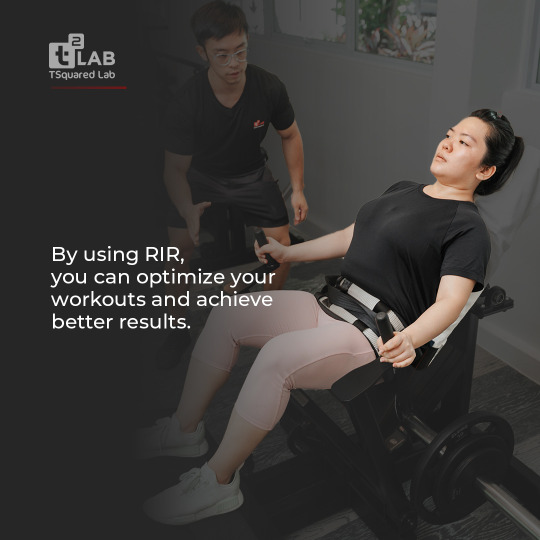
Putting RIR into Action:
Now that you know the wonders of RIR, here’s how you can make it work for you:
Warm-Up: Always start with a proper warm-up to prepare your muscles and joints for the workout ahead.
Set Your RIR: Before each exercise, decide on your RIR target. It could be 1-2 for heavier lifts or 3-4 for lighter ones.
Monitor Your Effort: As you perform each set, pay attention to how close you are to failure. Stop when you reach your RIR goal.
Progress Gradually: As you get stronger, reduce your RIR slightly to challenge yourself and promote muscle growth.
Listen to Your Body: If you’re feeling fatigued or experiencing discomfort, adjust your RIR to give your body the rest it needs.
Conclusion:
Reps in Reserve (RIR) is the key to unlocking your training potential and taking your strength workouts to new heights. By auto-regulating, progressing gradually, and staying safe with RIR, you can achieve better results and maintain consistency in your fitness journey. So, next time you hit the gym, remember the power of RIR and watch your gains soar!
0 notes
Text
Simple Concepts of FAT LOSS No One Gets

Embarking on a fat loss journey can feel like navigating a maze of conflicting information. It's time to debunk some myths and shed light on lesser-known but highly effective concepts that can transform your fat loss efforts. Forget the overrated cardio and carb-cutting mantras – in this article, we'll explore the underrated, science-backed strategies that can accelerate your weight loss journey and bring you closer to your fitness goals.
The Overrated: Debunking Common Fat Loss Myths

Doing Cardio: While cardio has its benefits, it's not the holy grail of fat loss. Many people believe that hours on the treadmill will magically shed pounds, but excessive cardio can lead to muscle loss and hinder your progress.
Zero Carb Consumption: Carbs have been demonized in the weight loss community, leading to misconceptions about eliminating them entirely. In reality, carbs are essential for energy and performance during workouts, making them an important part of a balanced diet.
The Underrated: Unveiling the True Power of Fat Loss

Lifting More Weight and Protein Intake: Strength training and protein consumption are two unsung heroes of fat loss. Lifting weights builds muscle, which boosts metabolism and helps burn more calories even at rest. Additionally, a high-protein diet promotes satiety and preserves lean muscle mass during weight loss.
More BMR Instead of Cardio: Basal Metabolic Rate (BMR) is the number of calories your body needs to maintain basic functions at rest. By focusing on increasing your BMR through muscle-building exercises and dietary choices, you'll create a more efficient fat-burning machine.
The Science Behind Fat Loss: Busting the Myths
Muscle Matters: Building muscle through resistance training elevates your resting metabolic rate, meaning you burn more calories throughout the day, even when you're not working out.
The Protein Factor: Protein is the king of nutrients for fat loss. It boosts metabolism, reduces appetite, and aids in muscle preservation during calorie deficits.
The Cardio Balance: While cardio has cardiovascular benefits, overdoing it can stress the body and lead to overeating. Striking a balance between cardio and strength training is key to sustainable fat loss.
Incorporating the Underrated Concepts:
Now that you know the secrets to effective fat loss, here's how to apply them to your fitness routine:
Embrace Strength Training: Include compound movements like squats, deadlifts, and bench presses in your workouts. Aim for at least 2-3 strength training sessions per week.
Prioritize Protein: Opt for lean protein sources like chicken, fish, tofu, and legumes in your meals. Aim for 1.2-1.6 grams of protein per kilogram of body weight daily.
Increase Your BMR: Focus on building lean muscle mass to elevate your BMR. The more muscle you have, the more calories your body burns, even at rest.
Find a Balanced Approach: Combine strength training, cardiovascular exercises, and a well-rounded diet to create a sustainable fat loss plan that works for you.
Conclusion:
It's time to break free from conventional fat loss myths and embrace the power of underrated concepts. By incorporating strength training, prioritizing protein intake, and focusing on increasing your BMR, you can unleash the true potential of your fat loss journey. Remember, it's not just about losing weight – it's about building a healthier, stronger, and more vibrant version of yourself. So, go ahead, put these concepts to the test, and watch your fat loss goals become a reality!
0 notes
Text
Defy Aging with Strength Training and Protein Power!
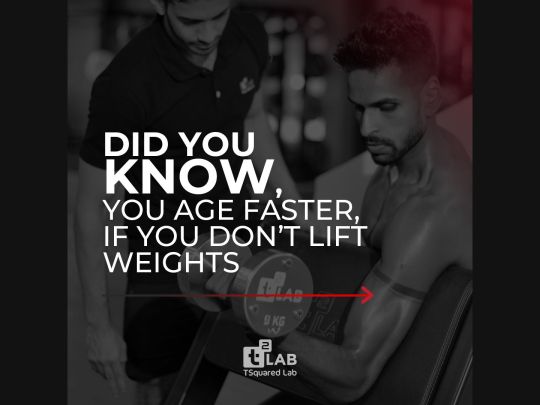
Did you know that getting older doesn't mean you have to feel older? As we age, our bodies naturally experience changes that can lead to reduced muscle mass and strength, a condition known as Sarcopenia. But fear not! You have the power to slow down this aging process and keep yourself feeling youthful and energetic. By incorporating resistance training and a high-protein diet into your lifestyle, you can turn back the clock and embrace a healthcare and happier you!

Resistance Training: A Fountain of Youth!
Lift weights, use resistance bands, or do bodyweight exercises to challenge your muscles.
Resistance training helps you maintain and build muscle mass, keeping you strong and agile.
Enjoy the added benefits of improved bone density and a boosted metabolism.
It's never too late to start; even a few minutes a day can make a significant difference.


🍳 The Protein Powerhouse:
High-protein foods like chicken, fish, eggs, and legumes are your muscles' best friends.
Protein provides essential building blocks for muscle repair and growth.
Enjoy a protein-rich breakfast to kickstart your day and set the tone for muscle support.
💡 Fun Fact: On average, it is estimated that sarcopenia affects 5–13% of elderly people aged 60–70 years, and as much as 11-50% of those over 80 or above (Reference). But you can change those statistics by taking action today!
Make it Fun, Make it Social:
Engage in activities you love, like dancing, swimming, or cycling, to stay active.
Join fitness classes or group exercises to make your workouts enjoyable and social.
Exercise with friends or family to boost motivation and hold each other accountable.
🍉 Nourish Your Body, Nourish Your Muscles:
A well-balanced diet fuels your body and supports muscle health.
Incorporate colorful fruits and vegetables for a range of essential nutrients.
Don't forget healthy fats like avocados, nuts, and olive oil to aid absorption.
💬 Real Experience: I started resistance training and increasing my protein intake, and the results were incredible! Not only did I feel stronger, but I also noticed improved flexibility and energy levels. Plus, the compliments from friends and family were the cherry on top!
🏆 Celebrate Small Wins:
Track your progress to stay motivated and celebrate every milestone.
Every step counts, so focus on consistency and the journey towards healthier living.
Embrace the positive changes in your body and mind as you age gracefully.
🍓 Superfood Alert: Blueberries are packed with antioxidants that can help combat the oxidative stress and inflammation associated with aging. Add them to your diet for an extra health boost!
Start Now, Age Later:
It's never too early or too late to start investing in your health and wellness.
Resistance training and a protein-rich diet benefit people of all ages.
Aging doesn't have to define you; embrace a lifestyle that defies odds!
Conclusion:
With resistance training and a high-protein diet, you can reclaim your youthfulness and vitality. Empower yourself to stay active, nourish your body, and celebrate the small wins on your journey towards better health. Remember, the key to defying aging lies in your hands – so start now, and age later! Let's embark on this exciting and rewarding journey together!
0 notes
Text
Benefits of training to Failure

When it comes to exercise and strength training, pushing your limits and challenging yourself is key to achieving optimal results. One technique that has gained significant attention is training to failure. In this article, we will delve into the benefits of training to failure, including the activation of type II muscles, the calibration of your training intensity, the effectiveness of your workouts, and the psychological enjoyment it brings.
Activating Type II Muscles:

Training to failure ensures that you activate and fully tax the type II muscle fibers within the targeted muscle groups. These fibers have a greater potential for growth and strength compared to type I fibers. By pushing yourself to the point of failure, you engage these muscle fibers more effectively, stimulating muscle hypertrophy and improving overall strength.
Calibrating Training Intensity:

Training to failure requires a deep understanding of your body's capabilities. By utilizing techniques such as Reps in Reserve (RIR) or Rate of Perceived Exertion (RPE), you can identify your true failure point and adjust your training accordingly. This calibration enables you to train more effectively, ensuring you are working at the appropriate intensity to stimulate muscle growth and adaptation.
Enhancing Workout Effectiveness:

Many beginners tend to stop their workouts well before reaching their actual capacity. Training to failure ensures that you are pushing yourself to your limits and giving your all during each workout. By consistently training to failure, you maximize your effort and ensure that you are working at an intensity that challenges your muscles, promoting progressive overload and yielding better results over time.
It’s Pretty Fun:
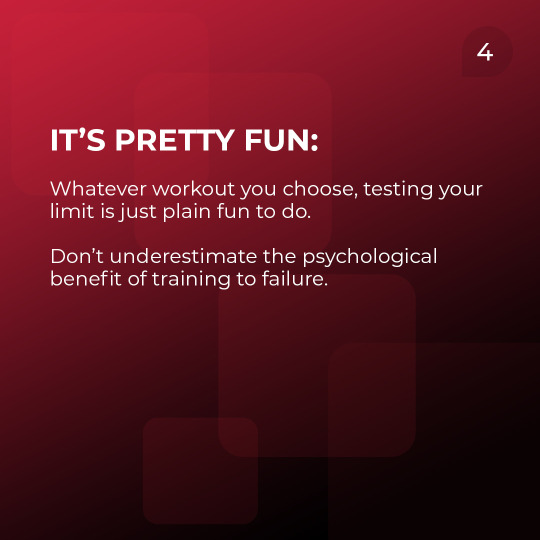
Training to failure adds an element of excitement and personal challenge to your workouts. Pushing beyond your perceived limitations and surpassing what you thought was possible can be incredibly rewarding. The mental aspect of training to failure cannot be underestimated, as it fosters a sense of accomplishment, boosts motivation, and builds mental resilience.
Conclusion:
Training to failure can be a valuable strategy on your fitness journey, offering numerous benefits that go beyond physical gains. By activating type II muscles, calibrating your training intensity, enhancing the effectiveness of your workouts, and enjoying the psychological benefits, you can take your fitness endeavors to new heights. Remember to approach training to failure with caution, ensuring proper form and technique, and allowing sufficient recovery to prevent overtraining. Embrace the challenge, embrace your potential, and witness the remarkable transformation that can occur when you push your boundaries and train to failure.
0 notes
Text

7 Reasons Why You May Want to Add Pilates to Your Exercise Regime
In the ever-evolving landscape of fitness in Singapore, one practice that has emerged as a shining star is Pilates. With its focus on precise movements and holistic well-being, Pilates has captured the attention of fitness enthusiasts not only locally but also on a global scale. In this article, we embark on a journey to uncover seven compelling reasons why weaving Pilates into your exercise routine could hold the key to unveiling an elevated realm of health and vitality.
Enhances core strength
Improves flexibility
Promotes better posture
Mind-body connection
Complements other workouts
A gentle way to work your whole body
Suitable for all ages and fitness levels
Incorporating Pilates into your exercise regimen isn’t merely about physical movement; it’s a commitment to holistic well-being. From enhancing core strength that empowers your every move and flexibility to promote better posture and mindfulness, Pilates presents an array of benefits. Learn more about the benefits of Pilates and TSquared Lab Blog.
https://tsquaredlab.com/blog/reasons-to-add-pilates-to-your-exercise-regime/
0 notes
Text

For years, there has been a widespread misconception that weight training will make women bulky. This myth has persisted due to a lack of knowledge and understanding of how weight training affects the female body. However, it’s time to set the record straight and separate fact from fiction.
The truth is that weight training is a fundamental and valuable component of any well-rounded fitness program for women, and it will not make them bulky.
Let’s explore the reasons why weight training will not make you look bulky:
Women have lower levels of testosterone, the hormone responsible for muscle growth, which means they have less potential for significant muscle gains compared to men.
Women naturally have a higher percentage of body fat and lower muscle mass than men.
Becoming a bodybuilder requires an extraordinary level of dedication, specific training, and often involves specialized nutrition and supplementation.
Strength training offers numerous benefits for women. To learn how to incorporate weight training into your fitness routines, without fear of becoming bulky, read the complete article on the TSquared Lab blog.
0 notes
Text
The Best Rep Range to Build Muscle
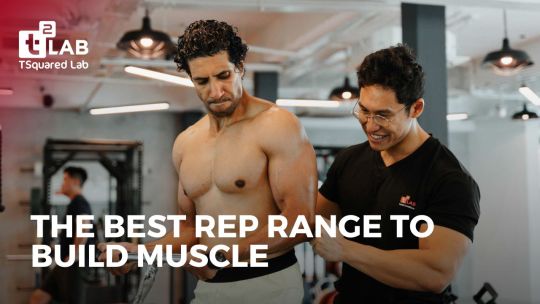
Like most people interested in building muscle, you’ve probably asked what the best repetition range is for the goal. You’ve probably gotten canned responses like:
“Lift in the 6 to 10 range.”
“Only do sets between 8 and 12 reps – the best range for growth.”
The answer isn’t as straightforward. So, let’s dig into the topic.
What Makes Our Muscles Grow, Anyway?
1. Volume
2. Frequency
3. Various Movements
4. Effort
5. Rep Quality
1. Volume
According to research, the essential factor influencing muscle gain success is training volume–-the amount of work we do in a given workout or training week. Studies find that doing more sets leads to more growth up to a point. Doing too much can have the opposite effect: recovery issues and muscle loss.
2. Frequency
While prevailing wisdom suggests that we should train our muscles once per week, research suggests that a frequency of two to three times per week might lead to better results. One reason for this effect is that training more frequently allows us to break up our weekly training volume into smaller and more manageable chunks.
3. Various Movements
The third critical piece of the puzzle relates to your exercise selection. Performing multiple exercises for all large muscle groups (quadriceps, hamstrings, back, and chest) and at least two for the smaller ones (biceps, triceps, shoulders, etc.) is vital for balanced development.
4. Effort
How much effort you put into individual sets also plays a massive role in your ability to grow. Simply put, you might be doing the best possible workout, but if you’re not pushing yourself close to your limits, you won’t be able to cause an adequate growth response. So, it’s essential to work hard and leave anywhere from one to three repetitions in the tank on most sets.
5. Rep Quality
Just as the number of repetitions you do matters, how you perform each is also crucial. There is no point in striving to do as many reps as possible if doing so means performing each with poor technique.
The Bottom Line?
There isn’t a single best rep range for muscle gain. You should leverage several intensity zones based on your overall training volume, the movements you’re doing, and such.
It’s best to take advantage of heavier and lighter loads to train in ranges between 5 to 30, always making sure to recover between sets, do each repetition with good form, and feel the correct muscles working.
Read more on TSquaredLab.com
0 notes
Text
Understanding Your Metabolism is the Key to Lose Weight

Weight loss can be a challenging journey, but understanding the factors that contribute to your total daily energy expenditure can make it easier to achieve your goals. In this article, we’ll explore the four key components of energy expenditure: Resting Metabolic Rate (RMR), Non-Exercise Activity Thermogenesis (NEAT), Thermic Effect of Food (TEF), and Exercise Energy Expenditure (EEE). By understanding how these factors work together, you can make informed decisions about your diet and exercise habits to create a calorie deficit and lose weight effectively.
Resting Metabolic Rate (RMR):

Non-Exercise Activity Thermogenesis (NEAT):
NEAT varies greatly between individuals and can be influenced by factors such as occupation, lifestyle, and genetics. It includes daily activities like walking, gardening, cycling, and even fidgeting. To increase your NEAT, consider making small changes to your daily routine, such as taking the stairs instead of the elevator, parking farther away from your destination, or incorporating short walks throughout your day.
The Thermic Effect of Food (TEF):
TEF is the energy your body uses to digest, absorb, and process the nutrients in the food you eat. Protein has the highest TEF, followed by carbohydrates and then fats. Eating smaller, more frequent meals can also increase TEF. To optimise your TEF, focus on consuming a balanced diet rich in lean proteins, whole grains, and healthy fats. This not only helps you feel fuller for longer but also increases the number of calories your body burns during digestion.
Exercise Energy Expenditure (EEE):

Conclusion:
By understanding the four components of energy expenditure, you can make informed decisions about your diet and exercise habits to create a calorie deficit and achieve your weight loss goals. Remember, consistency is key, and making small, sustainable changes to your lifestyle can lead to significant results over time. Stay focused, stay motivated, and you’ll be well on your way to a healthier, happier you.
Read similar article: Building muscle doesn’t have to consume all of your time!
0 notes
Text
Building muscle doesn’t have to consume all of your time!

You can achieve great results by training just 3 days a week, without spending hours at the gym.
The key is to focus on making the most out of each training session.
Here are some tips to help you achieve your goals:
Lack of time has always been the most common excuse of not going to the gym and working on building healthy muscles. But did you know 3 hrs and a week is all it takes to build muscle.
5 simple changes in your workout regime will lead you to the results.
Here’s how:
1. Prioritize heavy compound movements
Begin every workout with a heavy compound movement: Start your workout with a compound exercise that targets multiple muscle groups at once. This could include exercises such as squats, deadlifts, bench presses, or rows. By doing this, you will be able to maximize your gains in strength and muscle mass. Vary the rep techniques, such as pyramids or drop sets, to challenge yourself and avoid plateauing.
2. Include some enjoyable exercises and accessory movement
End each workout with one or two enjoyable exercises: After your heavy compound exercise, end each workout with exercises that you enjoy, such as arm or glute pumping exercises, or high-intensity interval training (HIIT). These exercises are effective at burning calories and creating muscle fatigue, which is key to muscle growth.
3. Include accessory movements that support the core exercise
Include accessory movements that support the core exercise: Accessory movements are exercises that target specific muscle groups to support the core exercise. For example, if you are doing squats, you could add lunges or leg presses to target the quadriceps and glutes.
4. Use Super Sets to maximize volume & efficiency
Combine accessory exercises that work various body parts to create supersets: A superset is when you perform two or more exercises back-to-back with little to no rest in between. Combining accessory exercises that work various body parts allows you to increase your workload and save time.
0 notes
Text
Lifting Weights Isn’t Just for Athletes and Bodybuilders

Lifting weights, irrespective of your age, is far more beneficial than you may think. It is the form of exercise that is suitable for people of almost all ages and fitness levels.
It’s for Parents Who Want to Enjoy Playing with Their Kids

As a parent, keeping up with your children can be challenging, especially as they grow and become more active. Lifting weights and incorporating resistance training into your fitness routine can help improve your strength, endurance, and flexibility, making it easier to keep up with your kids and enjoy more active playtime together.
It’s for All Who Want to Lose Weight and Improve Mental Health

Lifting weights isn’t just about building muscle; it’s also a great way to lose weight and improve mental health. Resistance training has been shown to boost metabolism, burn calories, and reduce stress levels, all of which can have a positive impact on overall health and well-being.
It’s for Elderly People Who Want to Live a Healthier and Happier Life

As we age, maintaining strength and mobility becomes increasingly important for overall health and quality of life. Lifting weights and resistance training can help improve bone density, balance, and coordination, reducing the risk of falls and injuries. It can also improve mood and cognitive function, allowing seniors to live a healthier, happier life.
The huge number of options available right from free weights, to bodyweight training, to suspension training, to barbell training and many more, makes strength training fun and appealing.
Additional benefits of strength training range from bone density, blood sugar regulation, fat loss, hormonal regulation (for both men and women), improvement in mental health, increases confidence and well-being.
Therefore irrespective of how old you are, adding strength training to your regime is going to reap nothing but positive results.
Originally posted on Medium.
0 notes
Text
Beyond Fitness: How TSquared Lab is Making a Difference

TSquared Lab came into existence with the thought of changing lives of people around us by bringing out a better version of themselves. We lived by the vision of sustainable transformation and educating clients about a healthy lifestyle.
But is all of the above enough to make a difference to someone’s life? We asked this to ourselves and were surprised to get the answer “NO”. So, now the question was, “What do we do to make a real difference?” There are many around us who are less privileged, who live the life of hardship and still have a zest for life. Doing something for these masses will let you make a small but real difference. Building a community that cares for people will create a sense of bond between two human beings who are different yet similar. And with that thought TSquared Lab Care was born.
We believe a good deed goes a long way. With that thought, we announced a food drive to help the less privileged. Just like us there were many clients who thought the same and came forward to either help with their time or donation. Together we were able to keep the light of humanity going by raising SGD 3,000 through this drive which supported 300 families. Though the number might look small, small starts lead to big things. The start is important, the awareness and intention to help matters the most.

Afshan — CEO of TSquared Lab, shared her emotions about this whole drive. “This food drive has been our small effort to transform beyond physique and fitness. The whole process of coming together and helping another individual is uplifting and soul satisfying. This is our attempt to build a community that cares for one another. The human will and spirit to change inspires me to do my bit for the society and I am grateful to my team and clients who contributed to this cause. It just shows that together we can bring change.”

The whole day of the food drive was heart touching and so were the experiences of the trainers who supported us throughout the day. They shared what the “gift of giving” meant to them.

“It was great to be able to give back to the community, as a team and alongside with our families. At the end of the day, it’s not about what you have or even what you’ve accomplished. It’s about who you’ve lifted up, who you’ve made better. It’s about what you’ve given back”, said Chef Sid — TSquared Eats.
TSquared Lab Cares will continue to organise such food drives more often and would seek support from all the clients and people who are willing to support this cause. We pledge to bring all hands together to create and sculpt a community where people care for each other and are committed to help one another in whatever way they can.
Learn more.
0 notes
Text
How To Break Through Strength Plateaus

Have you ever found yourself stuck with your training? You’re hitting the gym consistently, putting in the effort, and doing your best, but you can’t seem to make progress toward your goals?
If that’s the case, you might be dealing with a strength plateau. These are reasonably common but incredibly frustrating to overcome.
What is a Strength Plateau?
A good personal trainer can help set realistic expectations for how the human body works and how long it would take to get the desired results. On top of knowing what to expect, you would be equipped with the proper knowledge to easily spot scammers selling ideas that are too good to be true.
Five Tactics For Breaking Through Strength Plateaus
1. Push Yourself Harder
The single most reliable strategy for breaking a strength plateau is to push yourself harder. Doing so works because research finds that the average trainee doesn’t work nearly as hard as they believe.
2. Improve Your Technique
A good approach for a strength plateau is to take a step back and see how you can improve your technique, even if that means temporarily reducing the load you’re using. Sure, that isn’t what most people want to hear, but it sometimes becomes necessary to rebuild your technique.
3. Switch Up Some Of The Movements
Another effective training tactic for overcoming a strength plateau is replacing certain exercises for a while. Doing so is an excellent way to bring engagement into your training and increase your effort. Swapping movements is also beneficial for reinforcing proper technique and stopping yourself from getting too comfortable with your training.
4. Take Good Care Of Your Sleep
Getting adequate sleep might seem surprising under the circumstances, but it plays an essential role in your long-term training progress. Good sleep is vital for your cognition, motivation, focus, and athletic performance.
5. Improve Your Nutrition
The subject of nutrition is also overlooked by many people. These days, countless men and women hit the gym consistently and look for ways to improve their program, but ignore their nutritional habits and pay the price.
Learn more at TSquared Learn
0 notes
Text
KNOW WHAT HAPPENS: WHEN YOU SIT FOR TOO LONG

A sedentary lifestyle in often an invitation to health concerns. Get up, move, and improve your well-being. Know what happens when you sit for too long.
And after reading this, if you are still sitting then you need to work those legs up and rise from your seat.
THE MOMENT YOU SIT:

What happens at the moment you sit -
The Truth About Physiotherapy: 4 Common Myths
Nutrition Basics Every Beginner Must Learn
How Dietary Habits and Training Corelate with each other
SITTING FOR 2 HOURS. Good Cholesterol drops by 20%

Studies have shown that after sitting for two hours, the level of good cholesterol in your body drops by 20%. This means that sitting for long periods may increase your risk of heart disease and other health issues.
IT'S BEEN HOURS AND YOU ARE STILL SITTING:

Sitting for long hours can be harmful to your body. When you sit for an extended period, your body becomes stiff and immobile, which can lead to muscle degeneration and even muscle loss. Furthermore, the pressure of holding your torso, neck, and shoulders in the same position reduces blood flow, leading to fatigue.
Prolonged sitting reduces lung and heart efficiency, which can negatively impact your overall health. A sedentary lifestyle increases the risk of developing diabetes, high blood pressure, and heart disease. These health issues can lead to long-term problems, including organ damage and even death.
Fortunately, there are steps you can take to reduce the negative impact of sitting for too long. Taking regular breaks from sitting, stretching your body, and getting up to move around every hour can help keep your body healthy. A standing desk or an adjustable desk can also be a great investment for those who work at a desk for long periods.
In addition to these measures, maintaining a healthy diet and staying active is essential to mitigate the harmful effects of prolonged sitting. A balanced diet with protein intake can help keep your body healthy and active. Understanding your nutritional needs can go a long way in ensuring your overall health.
In conclusion, prolonged sitting can have serious consequences for your health. Understanding what happens to your body when you sit for too long is the first step in mitigating the negative impact. Incorporating regular physical activity, maintaining a healthy diet, and taking regular breaks from sitting can go a long way in keeping your body healthy and active.
Read similar articles:
Nutrition Basics Every Beginner Must Learn
5 Fantastic Benefits You Get From Personal Training
WHAT A FRESH START AT 50 LOOKS LIKE!
0 notes
Text

Physiotherapy is not new. The practice has been around for a long time, with the first documented origins dating back to 1813––more than two centuries ago.
But, regardless of its age and popular appeal today, there are still plenty of myths surrounding the practice.
Today’s article aims to break down four of the most common physiotherapy myths.
Let’s talk about it.
Myth 1: You Need a Prescription
It’s a myth that seeing a physiotherapist is a long and complicated process. You can book an appointment directly and they’re accessible in many places.
Getting the proper diagnosis early allows you to start treatment immediately and prevent further damage.
Myth 2: Physiotherapy is Painful
Worried that physiotherapy will be painful? Fear not – a good physiotherapist knows how to proceed without causing pain. In fact, most people seek physiotherapy because they’re already in pain or discomfort and want relief.
Myth 3: Physiotherapy is Unnecessary
Treating injuries with painkillers might seem like a quick fix, but it’s not sustainable. Physiotherapy is crucial for those with chronic pain, mobility loss, and injuries to prevent future problems. Don’t risk chronic issues or mobility loss – address the issue at its core.
Myth 4: Only Injured People Need Physiotherapy
Think physiotherapy is only for injured people? Think again. While it’s great for rehab, it’s also fantastic for prehab and preventing future issues. A skilled physiotherapist can correct your technique, strengthen weak muscles, and provide guidance on exertion while staying safe.
Proper hydration is crucial for good health, well-being, energy levels, and athletic performance. It is also necessary for joint health, thermal regulation, healthy blood pressure, brain function, flushing out toxins from the body, and much more.
Learn more: https://tsquaredlab.com/blog/learntransform/physiotherapy-4-common-myths
0 notes
Text
Nutrition Basics Every Beginner Must Learn

Are you new to the whole fitness thing and have no clue about proper nutrition and how to eat for good results?
If so, you’ve come to the right place because this article covers all the nutrition basics newbies need to understand for optimal fitness results and good health.
Ready? Let’s dive in.
Energy Balance
Energy balance refers to the number of calories consumed through foods and beverages compared to the energy we burn every day.
Calorie deficit for weight loss
Calorie surplus for weight gain
Consume and expend same amount of energy – maintain your current weight
Macronutrients And Diet Composition
The foods you eat determine your macronutrient intake. Most foods fall somewhere in the middle and contain some of the three macros.
Protein
Carbohydrates
Fats
Nutrient Timing
Nutrient timing refers to the act of eating specific foods at particular times to optimize your training performance and recovery.
The correct calorie intake
An adequate intake of all three macronutrients
Eating a balanced diet
Hydration
Proper hydration is crucial for good health, well-being, energy levels, and athletic performance. It is also necessary for joint health, thermal regulation, healthy blood pressure, brain function, flushing out toxins from the body, and much more.
Learn more: https://tsquaredlab.com/blog/learntransform/nutrition-basics-for-beginners
0 notes